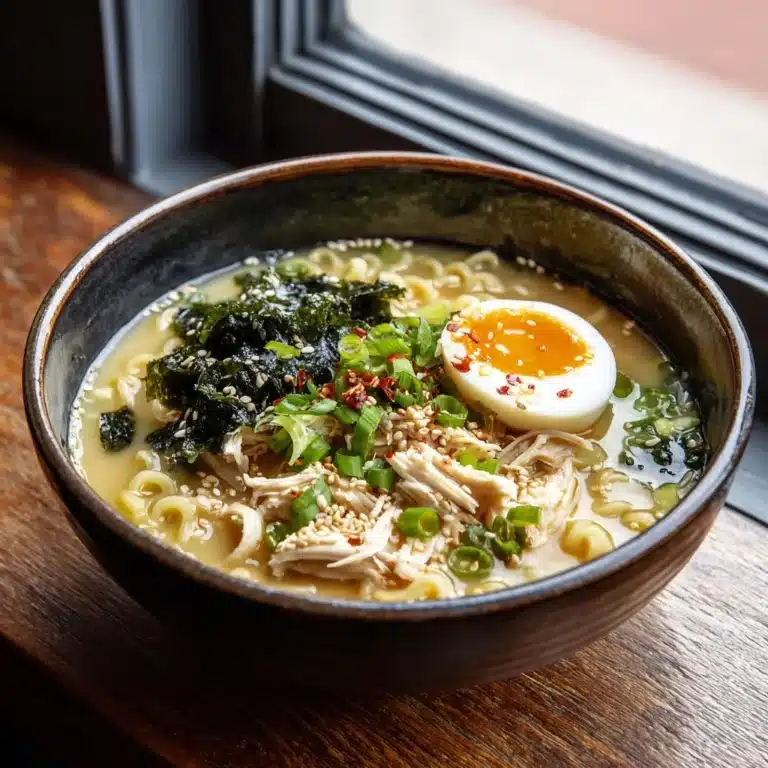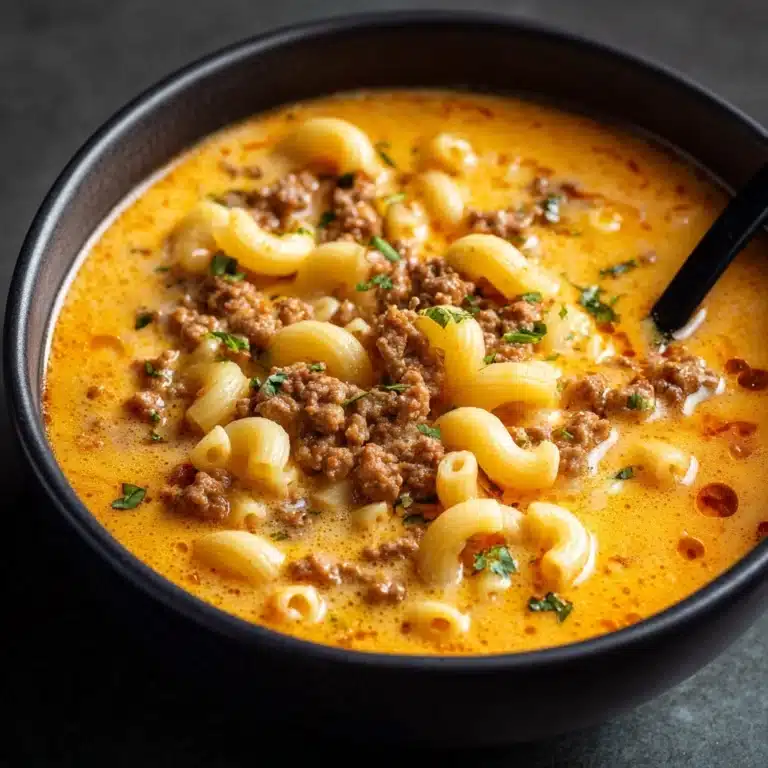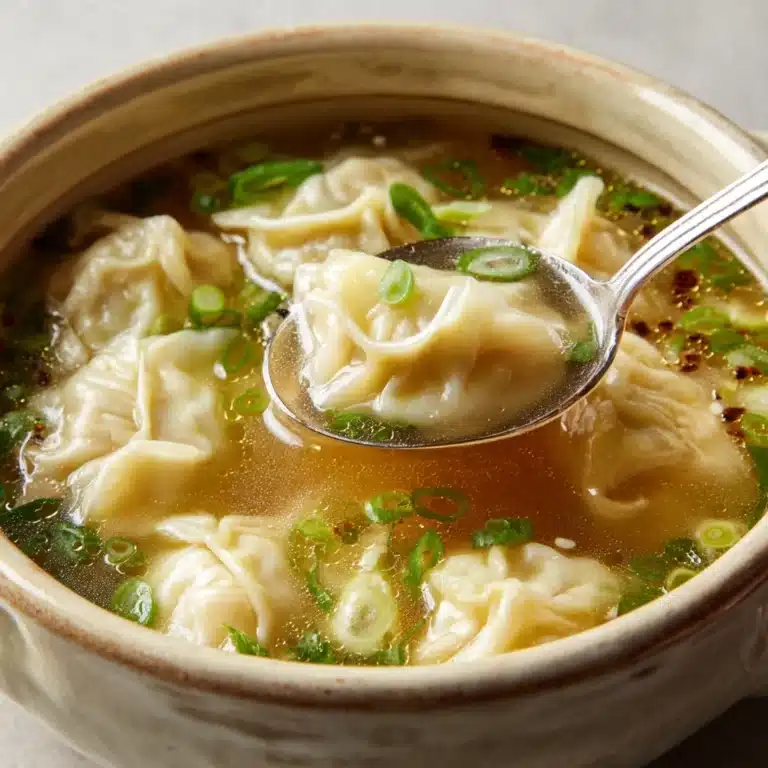Thai Coconut Soup Recipe
If there’s one dish that instantly transports me to balmy nights and bustling food stalls of Thailand, it’s Thai Coconut Soup. Creamy, tangy, just the right amount of spicy, and deeply aromatic from lemongrass and ginger, this bowl is pure comfort that never fails to impress. Whether you’re looking to brighten a weeknight dinner or dazzle guests at your next gathering, Thai Coconut Soup delivers big flavor in every spoonful. It’s one of those rare recipes where each ingredient brings a punch of personality—and together, they create magic.
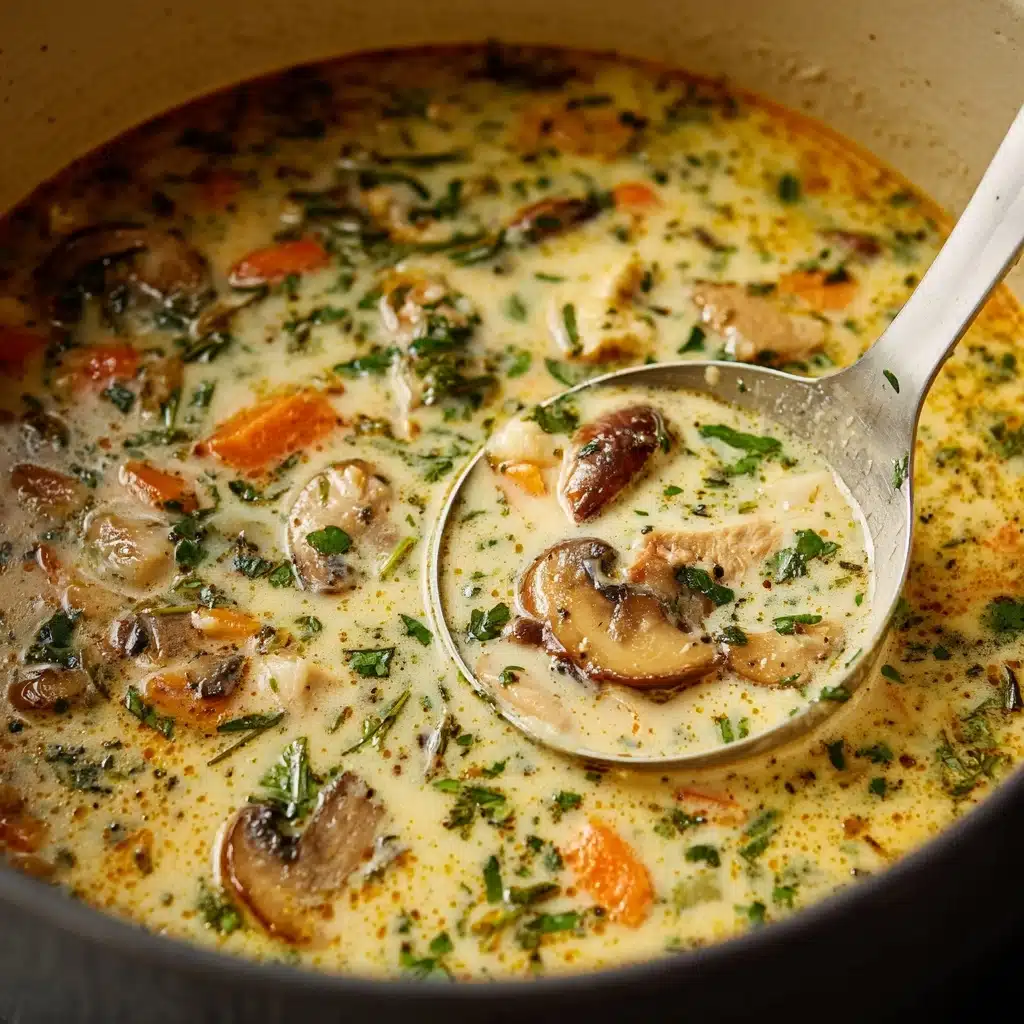
Ingredients You’ll Need
This Thai Coconut Soup keeps things delightfully simple, but every component plays an important role in achieving that signature flavor and gorgeous color. Here’s what you’ll need, along with some pro tips for getting the most from each ingredient:
- Coconut Oil: Sets the stage for big, lush flavors; use unrefined for the most aromatic result.
- Yellow Onion: Brings gentle sweetness and a soft base to the soup—slice thinly for even cooking.
- Garlic: Offers just the right amount of bite; fresh is best for that punchy flavor.
- Fresh Ginger: Adds warmth and a zesty kick—grate for maximum aroma and infusion.
- Red Curry Paste: The heart of Thai Coconut Soup’s heat and color—choose a high-quality paste if you can.
- Chicken or Vegetable Broth: Makes up the savory backbone; use homemade or low-sodium for better control.
- Full-Fat Coconut Milk: Delivers creaminess and that unmistakable tropical aroma—don’t skimp on quality here!
- Lemongrass: Pounded to release oils, it infuses the soup with unmistakable citrusy freshness.
- Kaffir Lime Leaves (optional): If you can find them, they add an earthy-sour note you’ll crave in each spoonful.
- Mushrooms: Provide satisfying texture and subtle umami; any variety works, but shiitakes are especially lovely.
- Red Bell Pepper: Brings a burst of color and a mild sweetness that plays well against the spice.
- Cooked Chicken or Tofu (optional): A protein boost that makes the soup heartier—totally customizable!
- Fish Sauce or Soy Sauce: For depth and salt—fish sauce adds classic Thai flavor, but soy sauce is great for a veggie version.
- Brown Sugar: Balances the heat and acidity with a gentle touch of sweetness.
- Lime Juice: For that essential tangy lift at the end—freshly squeezed is a must.
- Fresh Cilantro, Green Onions, and Lime Wedges: To shower on top and make each bowl extra vibrant.
How to Make Thai Coconut Soup
Step 1: Sauté the Aromatics
Begin by heating coconut oil in a large pot over medium heat. Once it shimmers, toss in your thinly sliced onion and cook for about 3 to 4 minutes, stirring frequently until it turns soft and slightly golden. Now add your garlic and grated ginger, giving everything a quick stir. Next, introduce the red curry paste and cook for an additional 1 to 2 minutes, letting the kitchen fill with its irresistible fragrance.
Step 2: Build the Broth
Pour in the chicken or vegetable broth and coconut milk, stirring gently to meld those flavors. Drop in your lemongrass (give it a good whack first!) and, if you have them, the kaffir lime leaves. Bring everything to a gentle simmer—never a rolling boil—so you preserve that creamy texture and preserve the delicate aromas that make Thai Coconut Soup so special.
Step 3: Add the Veggies
Time for color and crunch! Scatter in the sliced mushrooms and red bell pepper. Let them simmer for about 10 minutes, giving the vegetables time to become tender yet vibrant. This is where the soup transforms, taking on both flavor and beauty from the veggies as they soak up those intoxicating coconut and curry notes.
Step 4: Stir in Protein
If you’re adding cooked chicken or cubes of tofu, now’s the moment. Let them heat through in the gently bubbling broth. This step isn’t just about making the soup heartier—it’s also how you personalize the dish to match your cravings, whether you want it meaty, plant-based, or somewhere in between.
Step 5: Balance and Finish the Soup
Before serving, season with fish sauce or soy sauce for depth, a touch of brown sugar for balance, and generous lime juice for an uplifting tang. Taste as you go—the soul of Thai Coconut Soup is all about finding that perfect sweet, salty, spicy, and sour harmony. When happy with your creation, fish out the lemongrass stalks and lime leaves.
Step 6: Serve and Garnish
Ladle Thai Coconut Soup into bowls and crown each serving with fresh cilantro, sliced green onions, and lime wedges. The garnishes don’t just look pretty—squeeze that extra lime for an acidity burst and bring every flavor to life with those fresh herbs.
How to Serve Thai Coconut Soup
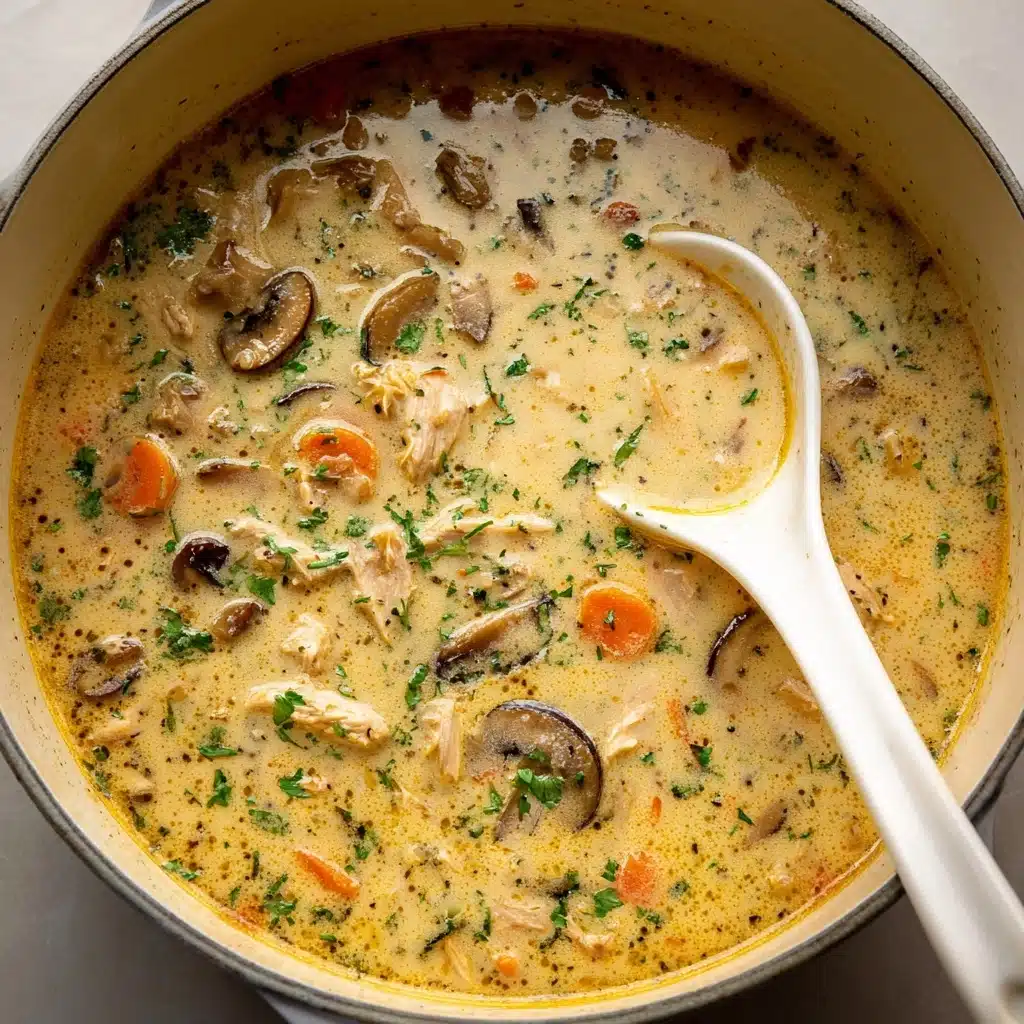
Garnishes
Toppings make all the difference! Always finish your Thai Coconut Soup with a handful of chopped cilantro, finely sliced green onions, and a few lime wedges. For those who love extra heat, add thinly sliced Thai chilis or a drizzle of chili oil right at the table. The herbs add freshness, the scallions bring a gentle bite, and the lime offers zippy brightness that cuts through the creamy broth perfectly.
Side Dishes
This soup shines alongside fluffy jasmine rice, which soaks up every last drop of broth. If you’re looking to make it a complete meal, consider serving it with crisp cucumber salad, spring rolls, or even a platter of Thai-style satay skewers. Each side helps balance the bold flavors of Thai Coconut Soup and brings the whole meal together.
Creative Ways to Present
Make your meal memorable! Try serving Thai Coconut Soup in individual coconuts for a fun tropical touch, or use deep noodle bowls with colorful napkins for a vibrant tablescape. Garnishing with edible flowers, extra lime zest, or chili threads takes presentation to the next level, turning a simple soup into a showstopper.
Make Ahead and Storage
Storing Leftovers
Let leftover Thai Coconut Soup cool to room temperature, then transfer it to an airtight container. Pop it in the fridge, where it will keep for up to 3 days. The flavors actually deepen overnight, making the soup somehow even more delicious the next day—truly a thrifty cook’s dream!
Freezing
This recipe freezes beautifully! Portion your cooled soup into freezer-safe containers (leave a bit of space for expansion), seal tightly, and freeze for up to 2 months. Just know that the texture of the coconut milk may change a little after thawing, but a good stir will restore its creamy consistency.
Reheating
Warm your Thai Coconut Soup gently on the stovetop over medium-low heat, stirring often to keep the coconut milk silky and prevent separation. If you’re in a hurry, the microwave works too—just use a lower power setting and stir halfway through. Add an extra splash of lime juice or a sprinkle of fresh herbs to wake up the flavors before serving.
FAQs
Can I make Thai Coconut Soup vegetarian or vegan?
Absolutely! Swap chicken broth for vegetable broth and use tofu in place of chicken. Choose soy sauce instead of fish sauce to keep it 100% plant-based—and you’ll still get all those incredible Thai flavors.
How spicy is this soup, and can I adjust the heat?
Thai Coconut Soup has a gentle heat thanks to red curry paste, but you’re in control. For more spice, add Thai chilies or chili paste. If you want it milder, start with less curry paste and add more to taste.
What if I can’t find lemongrass or kaffir lime leaves?
No worries! While they add authentic aroma, your soup will still taste fantastic with just ginger and lime. A bit more lime zest can offer a slight citrus bump if you’re missing kaffir lime leaves.
Can I use light coconut milk instead of full-fat?
You can, though the soup won’t be quite as creamy or rich. For a lighter Thai Coconut Soup, light coconut milk is a fine choice—it keeps the calories down but you’ll still get that signature flavor.
What proteins work best besides chicken or tofu?
Thai Coconut Soup is super flexible! Shrimp is a classic choice, and even thinly sliced pork or mushrooms (for a meatless take) are wonderful. Just be sure to adjust cooking times so the protein cooks through without getting tough.
Final Thoughts
If you’ve never made Thai Coconut Soup at home before, you’re in for such a treat. It’s cozy, bold, and feels special enough to serve friends but simple enough for a weeknight. Give it a try—I promise, your kitchen will smell incredible and your taste buds will thank you!
Print
Thai Coconut Soup Recipe
- Total Time: 35 minutes
- Yield: 4 servings 1x
- Diet: Non-Vegetarian
Description
A comforting and flavorful Thai Coconut Soup, also known as Tom Kha, that is rich and creamy with a perfect balance of savory, sweet, and spicy flavors. This dairy-free soup is packed with aromatic herbs, vegetables, and protein, making it a satisfying meal on its own.
Ingredients
Main Soup Ingredients:
- 1 tablespoon coconut oil
- 1 small yellow onion, thinly sliced
- 3 cloves garlic, minced
- 1 tablespoon fresh ginger, grated
- 2 tablespoons red curry paste
- 4 cups chicken broth or vegetable broth
- 1 can (14 oz) full-fat coconut milk
- 1 stalk lemongrass, trimmed and smashed
- 2 kaffir lime leaves (optional)
Additional Ingredients:
- 8 ounces mushrooms, sliced
- 1 medium red bell pepper, thinly sliced
- 1 cup cooked chicken or tofu (optional)
- 2 tablespoons fish sauce or soy sauce
- 1 tablespoon brown sugar
- Juice of 1 lime
- Fresh cilantro, green onions, and lime wedges for garnish
Instructions
- Sauté Aromatics: In a large pot, heat coconut oil over medium heat. Add the onion and sauté until soft. Stir in garlic, ginger, and red curry paste, and cook until fragrant.
- Add Broth and Vegetables: Pour in the broth and coconut milk. Add lemongrass and kaffir lime leaves. Simmer gently. Add mushrooms and bell pepper, and cook until tender.
- Finish Soup: Stir in cooked chicken or tofu. Add fish sauce or soy sauce, brown sugar, and lime juice. Adjust seasoning. Remove lemongrass and lime leaves. Serve hot, garnished with cilantro, green onions, and lime wedges.
Notes
- For a spicier soup, add sliced Thai chili or chili garlic sauce.
- You can substitute shrimp or omit protein for a lighter version.
- This soup pairs well with jasmine rice.
- Prep Time: 15 minutes
- Cook Time: 20 minutes
- Category: Soup
- Method: Stovetop
- Cuisine: Thai
Nutrition
- Serving Size: 1 bowl
- Calories: 290
- Sugar: 5g
- Sodium: 720mg
- Fat: 20g
- Saturated Fat: 15g
- Unsaturated Fat: 5g
- Trans Fat: 0g
- Carbohydrates: 16g
- Fiber: 3g
- Protein: 12g
- Cholesterol: 30mg
